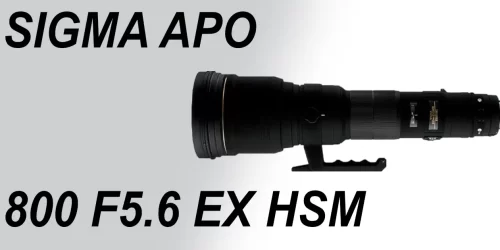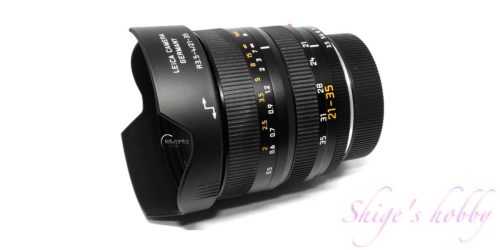SIGMA APO 70-200mm F2.8 EX HSM
Large aperture telephoto zoom lens

A review and photo examples of the SIGMA APO 70-200mm F2.8 EX HSM
- This page contains advertisements. Clicking on the advertisements may earn the page administrator a reward. Details of the advertisements are listed at the links below.
Table of contents
Gallery
- The sample photos were taken with the SIGMA SD9.
Review


1.Overview
The SIGMA APO 70-200mm F2.8 EX HSM is a large-aperture, telephoto autofocus (AF) zoom lens made by Sigma and compatible with 35mm format, released in 2003.
It has a lens configuration of 17 elements in 14 groups, with two SLD (special low dispersion) glass elements in the front group and two in the rear group, achieving a large aperture of F2.8 across the entire focal length range, and is equipped with an ultrasonic motor (HSM) for the compatible mount, has nine aperture blades, an aperture value of F2.8, a minimum shooting distance of 1.8m, weighs 1.43g, and the tripod mount is removable.
Although there is no IF in the name, the lens length does not change during operation with internal zoom and internal focus.
Compatible lens mounts include Sigma SA, Canon EF, and Nikon F(D) with HSM, while PENTAX and SONY (MINOLTA) versions were released without HSM.
Accessories include a case and a cylindrical hood (LH1571-02), and the list price is 140,000 yen (excluding tax) with HSM and 130,000 yen (excluding tax) without HSM.
1.4x and 2x APO Teleconverter EX can be used.
2.Usage
The SIGMA APO 70-200mm F5.6 EX HSM is one of the big three zoom lenses that were popular in the film era. In the film camera era, each manufacturer had a lineup, including lens manufacturers Sigma, Tokina, and Tamron.
Therefore, users of Canon, Nikon, etc. have many options when it comes to 70-200mm F2.8 class lenses. Since I purchased this lens for the SIGMA SD9 and SD10, I could only choose Sigma. For lens manufacturers, the Sigma mount is ignored because the market is small.
When the subject is of a reasonable size, the AF focus accuracy is decent, and it is easy to focus on the desired position in low-contrast situations or when there are no difficult obstacles such as bushes or wire mesh.
Since the telephoto end is 200mm, the telephoto focal length is insufficient, so it is not suitable for photographing small birds, and is a lens to be used for subjects of a certain size.
When using the APO Teleconverter 1.4x EX teleconverter, it becomes a lens close to a 98-280mm F4 SsangYong zoom. With the SD9 sensor size, it becomes a 166-476mm F4 lens in 35mm equivalent, and the maximum aperture is F4, so AF also works.
When using the APO Teleconverter 2x EX teleconverter, it becomes a 140-400mm F5.6 AF zoom lens. With the SD9 sensor size, it becomes a 238-680mm F5.6 lens in 35mm equivalent, and the maximum aperture is F5.6, so AF also works.
Since the AE functions of both are linked, you can leave the exposure control while using the converter to the camera, but the focus accuracy is worse than the maximum aperture of F2.8 without the teleconverter. I bought it thinking that using a teleconverter would cover the telephoto side, but I was not satisfied with the focus accuracy of the SD9’s AF when the teleconverter was attached, so I purchased a prime lens with a longer focal length, the 500mm EX HSM F4.5.
3.Add info.
For Sigma, the 70-200mm was one of the main earners in the film era, and it has been updated frequently. In terms of usability, the macro version from 2007 and the one with image stabilization from 2011 are convenient. The latest sports type is amazing in that it is priced at 150,000 yen, but it does not completely surpass past lenses in terms of functionality. The minimum shooting distance is 1.2m, which is not as far as the MACRO, it is equipped with an image stabilization mechanism, and it has a lens configuration of 22 groups and 24 elements, which is a significant increase from past lenses, and the weight is close to 2kg. However, this specification seems a bit over-built.
The EX HSM and EX DG HSM have been on the market for about 20 years, so if they are in average condition, they can sometimes be sold for around 10,000 yen used. At this price, it seems worth buying, but since the minimum shooting distance is long and the lens design is old, if it exceeds 20,000 yen, I think it would be better to look for a successor lens.
A lens with the same focal length on the telephoto side is the Sigma prime lens APO MACRO 180mm F3.5 EX IF HSM. This lens has the sharpness of a prime lens, a minimum shooting distance of 0.23m, and weighs less than 1kg, so if you value macro performance, this is also an option.
Also, at the same time, I was using TAMRON’s manual focus lens SP 180mm LD IF. In terms of bokeh at the same focal length, the prime lens TAMRON 63B wins. It also has the advantage of being able to get closer with a minimum shooting distance of 1.2m. The price of this lens will also rise in 2024 due to a decrease in good quality products, and I feel that anything over 50,000 yen is too expensive for an old lens.
Specification
| Items | EX HSM | EX DG HSM | Ⅱ EX DG MACRO HSM | EX DG OS HSM | DG OS HSM-S |
| Focal length(mm) | 70-200 | 70-200 | 70-200 | 70-200 | 70-200 |
| Max aperture | 2.8 | 2.8 | 2.8 | 2.8 | 2.8 |
| Min aperture | 22 | 32 | 22 | 22 | 22 |
| Lens Construction | 17 elements in 14 groups | 17 elements in 14 groups | 18 elements in 15 groups | 22 elements in 17 groups | 24 elements in 22 groups |
| Aperture blade | 9 | 9 | 9 | 9 | 11 |
| Min distance(m) | 1.8 | 1.8 | 1.0 | 1.4 | 1.2 |
| Lens length(mm) SIGMA-SA | 181.2 | 181.2 | 184.4 | 197.6 | 202.9 |
| Lens Max diameter(mm) | 86.2 | 86.2 | 86.5 | 86.4 | 94.2 |
| Filter Size(mm) | 77 | 77 | 77 | 77 | 82 |
| Lens hood | LH835-02 | LH835-02 | LH850-01 | LH850-02 | LH914-01 |
| Weight(g) SIGMA-SA | 1270 | 1270 | 1370 | 1430 | 1805 |
| Release date | 2002 | 2005 | 2007 | 2011 | 2018 |
| Price(Yen/No-tax) | 130,000 yen (without HSM) 140,000 yen (with HSM) | 145,000 yen | 142,900 yen | 165,000 yen | Open 150,000 yen |
Reference links
- SIGMA APO 70-200mm F2.8 EX HSM・Web Archive
- SIGMA APO 70-200mm F2.8 EX DG HSM・Web Archive
- APO 70-200mm F2.8ⅡEX DG MACRO HSM News release
- SIGMA APO 70-200mm F2.8 EX DG OS HSM
- SIGMA 70-200mm F2.8 DG OS HSM | Sports
- SIGMA APO 180mm MACRO F3.5 EX HSM・Web Archive
- TAMRON 180mm F2.5 63B
Update history
- 2024.12.23
Affiliate link
- Amazon Affiliate Link/Keyword=Sigma
- Amazon Affiliate Link/Keyword=Sigma lens
- Amazon Affiliate Link/Keyword=Sigma books







